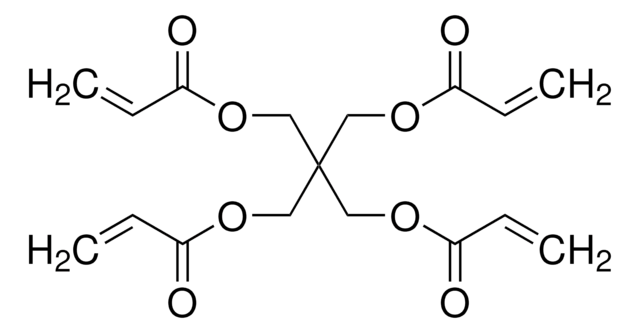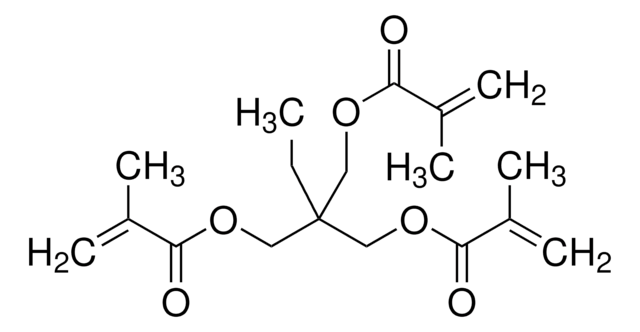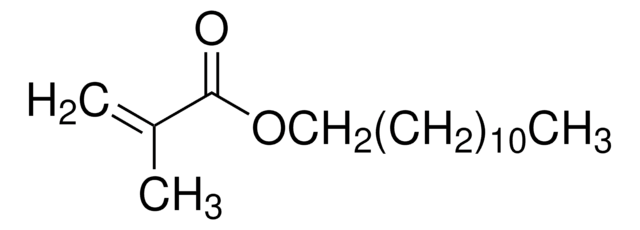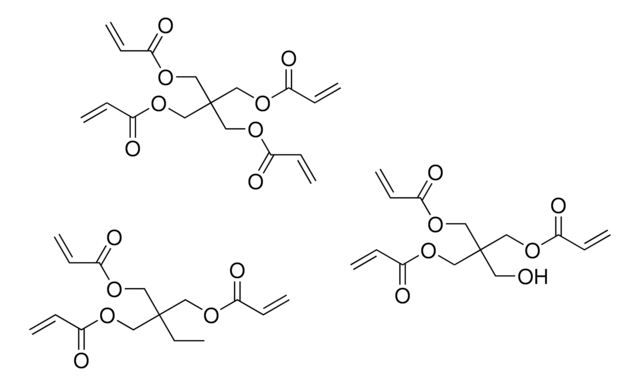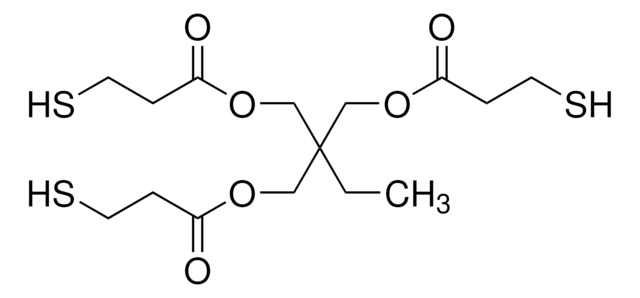246840
Trimethylolpropane trimethacrylate
contains 250 ppm monomethyl ether hydroquinone as inhibitor, technical grade
Sinonimo/i:
Acryester TMP, Blemmer PTT, PTMA, TMPTMA
About This Item
Prodotti consigliati
Grado
technical grade
Livello qualitativo
Densità del vapore
>1 (vs air)
Tensione di vapore
<0.01 mmHg ( 20 °C)
contiene
250 ppm monomethyl ether hydroquinone as inhibitor
Indice di rifrazione
n20/D 1.472 (lit.)
Densità
1.06 g/mL at 25 °C (lit.)
Stringa SMILE
CCC(COC(=O)C(C)=C)(COC(=O)C(C)=C)COC(=O)C(C)=C
InChI
1S/C18H26O6/c1-8-18(9-22-15(19)12(2)3,10-23-16(20)13(4)5)11-24-17(21)14(6)7/h2,4,6,8-11H2,1,3,5,7H3
OKKRPWIIYQTPQF-UHFFFAOYSA-N
Cerchi prodotti simili? Visita Guida al confronto tra prodotti
Categorie correlate
Descrizione generale
Applicazioni
- Poly(hydroxyethyl methacrylate) (pHEMA) nanocomposites that are used in the dental industry.
- Silicone rubber with a reduced bleed-out ratio.
- Organic monolithic column by living/controlled free-radical polymerization. This column can be used as a stationary phase in capillary liquid chromatography.
- Macroporous poly (glycidyl methacrylate-co-trimethylolpropane trimethacrylate) materials with fine controlled porous properties.
Codice della classe di stoccaggio
10 - Combustible liquids
Classe di pericolosità dell'acqua (WGK)
WGK 2
Scegli una delle versioni più recenti:
Possiedi già questo prodotto?
I documenti relativi ai prodotti acquistati recentemente sono disponibili nell’Archivio dei documenti.
I clienti hanno visto anche
Il team dei nostri ricercatori vanta grande esperienza in tutte le aree della ricerca quali Life Science, scienza dei materiali, sintesi chimica, cromatografia, discipline analitiche, ecc..
Contatta l'Assistenza Tecnica.
